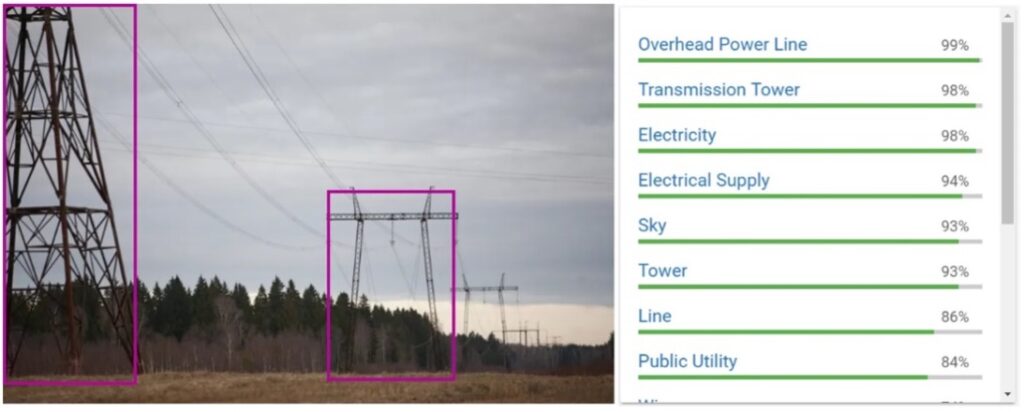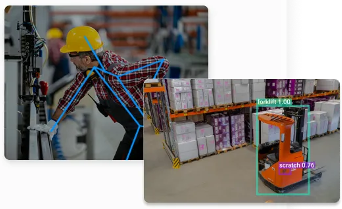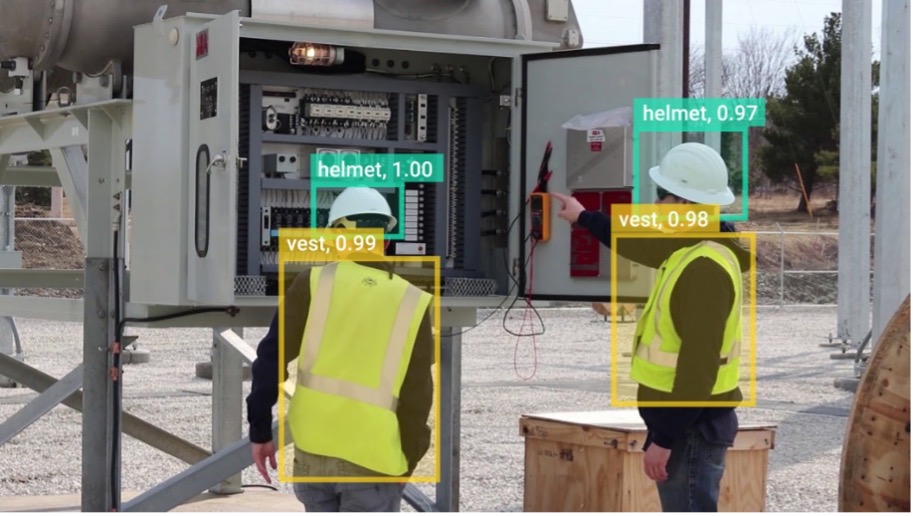Computer vision, which is an advanced branch of AI, pertains to any technique that enables machines to understand visual inputs. In its early stages, computer vision involved breaking down an image into a one-dimensional pixel array and utilizing the borders and edges of shapes to create 3D models from 2D images. However, computer vision has since advanced to incorporate feature-based object recognition and convolutional neural networks (CNNs). Social media platforms offer a great example of the effectiveness of CNNs. When a user is tagged in a photo, an algorithm learns the characteristics of that user’s face. CNNs then use a series of filters to calculate the probability that a new image matches a specific user[1].
Advantages of Computer Vision in the Energy SectorComputer Vision is a field that relies on sophisticated computing and image recognition technologies to analyze images captured by cameras. This analysis is carried out through image processing and machine learning techniques, such as deep neural networks. In recent years, AI vision has been combined with Edge Computing and IoT to enable AI computing to be moved from the cloud to the network edge. This integration has made it possible to deploy robust, large-scale AI vision systems by connecting edge devices for on-device machine learning. Image recognition systems are relatively easy to implement compared to most sensor technologies since they have a small footprint and minimal impact on existing infrastructure. For instance, security cameras can be repurposed for this task (Figure 1). Hence, AI vision systems are easy to maintain and highly cost-efficient, making them ideal for large-scale solutions in the power utilities industry. These systems are capable of covering vast areas efficiently, even in remote and distributed regions.
Industrial Utility Equipment with Deep Learning Substation Equipment Monitoring and Fault DiagnosisThe technology of AI vision is employed to recognize and monitor the status of substation equipment such as transformers, circuit breakers, capacitors, lightning arresters, and combined electrical appliances. With the automated early detection of equipment failure, hidden hazards, and anomalies, the operation and maintenance costs can be reduced significantly. This technology further supports maintenance work and enhances the quality of power supply service. In contrast to human inspection, computer vision is highly precise, consistent, objective, and fully automated.
Analog Controls RecognitionThe application of AI vision involves the recognition and digitization of analog controls for detecting signal lights, pointer position in analog dials, switch position, or liquid surface position of transformer oil. This enables the automation of substation meter readings without human intervention, which is essential for predictive monitoring to detect abnormalities and provide warning of equipment faults.
Power Substation AI Inspection Automation Foreign Object DetectionThrough computer vision applications, foreign objects that can potentially cause power supply failures can be automatically detected. AI vision can also be used for general inspections of the substation, allowing for continuous detection and monitoring of the cleanliness and quality of maintenance work.
Personal Protective Equipment InspectionIn the power and utilities industry, companies are increasingly utilizing deep learning models for real-time detection of protective equipment. In hazardous work environments, it is crucial to enhance workplace safety management by automating the inspection of personal protective equipment such as helmets, workwear uniforms, and vests. AI analyzes the camera video feed to automatically monitor and report any misconduct that violates safety protocols. This automated AI vision inspection replaces manual supervision and results in significant time and cost savings, while also improving the consistent, accurate, and rapid detection of personal protective equipment (PPE) (Figure 2).
Utility Infrastructure Monitoring and State Recognition Disconnect Switches State RecognitionAccurately knowing the state of disconnect switches in a power distribution substation is crucial as incorrect operation can result in accidents, outages, and damage to equipment. While human errors in reporting switch positions are infrequent, they can have a significant impact when they occur. To mitigate this risk, vision systems can be deployed to automatically monitor disconnect switches in unmanned substations. Non-intrusive computer vision applications can utilize regular surveillance cameras, which can also be repurposed for other uses, resulting in reduced costs and simplified installation and maintenance compared to using individual per-switch sensors.

Ensuring the reliability and continuous operation of the power grid is critical, and power line inspection is a key component of achieving this goal. In the past, power line inspections were primarily performed manually, either by liners inspecting the lines in person or reviewing footage captured by drones or robots. However, this method is inefficient, repetitive, and costly due to labor expenses. To address these challenges, computer vision applications have been introduced in the power and utilities industry to automate inspection tasks. For example, broken spacer detection utilizes machine learning to identify spacers within regions of interest and employs image classification to automatically detect faults caused by broken spacers. This automated approach leads to higher inspection performance, reduces the risk of outages, and minimizes infrastructure damage.

The energy sector faces several challenges due to climate concerns, shifting demand patterns, diversification, and decentralization of energy production. In response, the adoption of AI technology can assist in reducing costs and waste and accelerating the implementation of renewable energy through the following means: [6]
Fault Prediction and MaintenanceAI-powered sensors can enable equipment monitoring and the detection of potential failures in advance, leading to savings in resources, time, and costs, as well as increased safety. These systems can be combined with drones for automated maintenance, enhancing the efficiency of fault prediction.
Losses Due to Informal ConnectionsAI can detect unauthorized connections by analyzing irregularities in customer usage patterns and payment history. Additionally, when integrated with automated meters, it can enhance monitoring.
However, AI in the energy sector comes with its challenges[7].
- Confidentiality and Security: The security and privacy of personal data are critical, and a system breach can result in the leakage of confidential information that can be used to harm customers.
- Energy Consumption: AI systems require a large amount of processing power, which results in significant energy consumption. Therefore, it is essential to design energy-efficient and environmentally friendly data centers for AI-powered systems used in power plants.
- Knowledge, Data, and Transparency: Intelligent meters depend on continuous data communication, and the reliability of AI-equipped power systems is not always guaranteed. Additionally, low communication can lead to insufficient data for machine learning models, making them vulnerable to inaccurate data.
References
[1] https://viso.ai/applications/computer-vision-in-energy-and-utilities-industry/
[3] https://viso.ai/applications/computer-vision-in-energy-and-utilities-industry/
[4] https://viso.ai/applications/computer-vision-in-energy-and-utilities-industry/
[5] https://viso.ai/applications/computer-vision-in-energy-and-utilities-industry/
[8] https://pyimagesearch.com/2022/08/24/computer-vision-and-deep-learning-for-electricity/



